What is bourbon? That’s Jack Daniel’s, right? Whiskey? Something to do with rye? Well, yes to all three, actually. Very simply, bourbon is a mixture of grains, ground up, mixed with water and heated, fermented with the help of yeast, distilled, then aged in oak barrels.
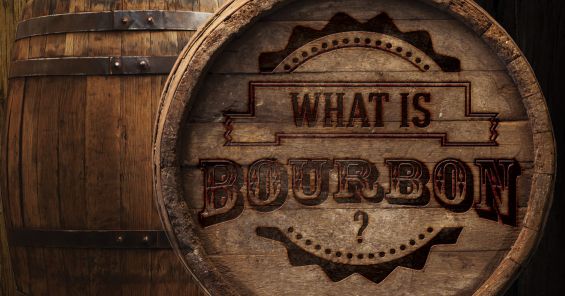
All very simple. But are bourbon and American whiskey the same thing? No. One way to remember is that all bourbons are whiskeys, but not all whiskeys are bourbons. American whiskey includes sub-categories including bourbon, straight bourbon, rye, wheat, malt, rye malt and corn, each with its own set of rules. For example, corn whiskey must be made with at least 80% corn; the grain mixture (‘mash bill’) for rye whiskey must be a minimum of 51% rye, and so on. But all American whiskeys have the following in common:
- they must be distilled at no higher than 80% ABV
- they must be matured in charred, new oak containers (with the exception of corn whiskey, which can be stored in used or uncharred barrels)
- the ABV of the whiskey must be 62.5% ABV or lower when it enters the cask.
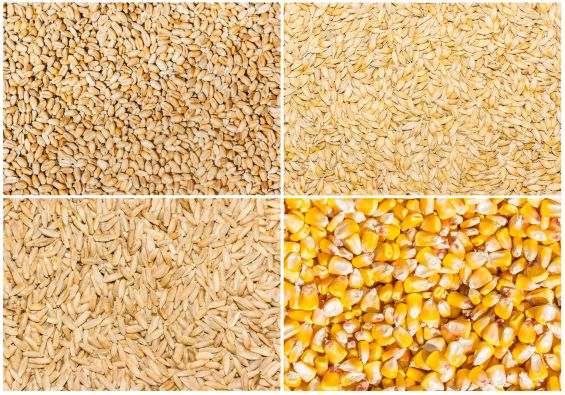
The four main grains used in bourbon. Clockwise from top left: wheat, barley, corn, rye
The grains
Corn
The main ingredient in bourbon, corn must make up at least 51% of bourbon mash bills; in practice, it makes up about 70%. When the spirit is very young, the corn flavour is very noticeable, but mellows with age, although the sweetness will persist.
Rye
Delivering peppery spice and power, rye is the most characterful of all grains used in bourbon production. Typically, rye normally makes up 10% of the mash bill, but ‘high-rye’ bourbons, such as Four Roses Single Barrel, are higher, up to about 35% rye.
Barley
Used primarily because it is so effective at converting fermentable starches to sugar, barley is the workhorse ingredient, and usually makes up 10-15% of the mash bill.
Wheat
The opposite of rye, the addition of wheat will make the resultant spirit softer and smoother, and – because wheat’s inclusion will usually be at the expense of rye – sweeter. In practice, wheat rarely makes up more than 10% of the mash bill.
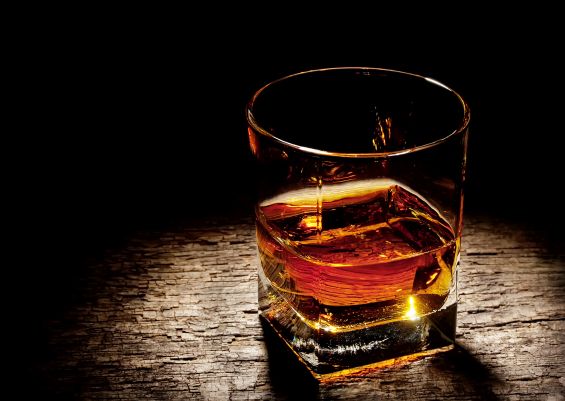
How is bourbon made?
The grains are ground up then added to a large ‘mash cooker’ along with water and cooked for 30 minutes, to break down the starch into fermentable sugars.
The mash is then transferred to a fermentation tank along with a small proportion of ‘sour mash’, spent mash from a previous distillation which helps get fermentation going, a similar effect to a yeast ‘starter’ used when making sourdough bread. The finished product is a beer-like substance with an ABV of around 6-8%.
The liquid is then distilled twice; the first time in a column still to approximately 50-60% ABV, then a second time, this time in a copper pot still, up to roughly 70% ABV. The new-make spirit, known as ‘white dog’, is transferred to new, charred, white-oak barrels (almost always American, but French is also permitted).
Bourbon categories
Straight bourbon
If you see the term ‘straight bourbon’ on your bottle, you know that the liquid has been aged in new oak for a minimum of two years.
Single barrel
Single-barrel bourbons are always worth trying, given that the vast majority of bourbons are made by mixing (or ‘vatting’) dozens or even hundreds of barrels to ensure consistency of flavour.
Small batch
Any bourbon bearing the words ‘small batch’ on the label could be a batch of 10 barrels or 10,000. In practice, the vast majority of small-batch bourbons will not be a marriage of hundreds of barrels, and more importantly, the reality is that extra care and attention is placed on these bottlings.
How do you drink bourbon?
Bourbon is a highly versatile spirit, and can be drunk neat, mixed and served long. There are also a number of iconic bourbon cocktails, such as the Manhattan, Old Fashioned and Whiskey Sour – so it’s a great idea to have a bottle in your drinks cupboard. Oh, and despite some of the headlines you might see, there’s no such thing as the best bourbon – it’s all down to your personal taste. So, if you find an entry-level bourbon you prefer to one twice the price, no problem!
Bourbon facts
- there are more barrels of bourbon in Kentucky than there are people
- the first-ever single-barrel example was Blanton’s bourbon, released in 1984
- Buffalo Trace, founded more than 200 years ago, is the oldest continuously running distillery in the US
- 75% of all Kentucky bourbon is made by Jim Beam
- 95% of US bourbon is made in Kentucky.
Tagged Blanton's, Buffalo Trace, Four Roses, Jack Daniel's, Jim Beam


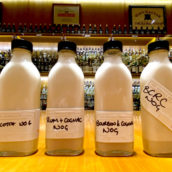

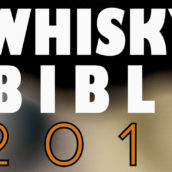
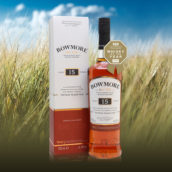




 Enjoy responsibly
Enjoy responsibly
Comments
#Whisky What is bourbon? A guide from The Whisky Exchange: What is bourbon? That’s Jack Daniel’s, right? Whis… https://t.co/2hxhBOHoYx
What is bourbon? A guide from The Whisky Exchange https://t.co/GLoxLxT3Ev via @whiskyexchange
What is bourbon? A guide from The Whisky Exchange https://t.co/SdkkNVgOrU https://t.co/CkEQjfAZ4n
#Whisky blog: What is bourbon? A guide from The Whisky Exchange https://t.co/R0LDrWCMr3
RT @TopWhiskies: #Whisky blog: What is bourbon? A guide from The Whisky Exchange https://t.co/R0LDrWCMr3
RT @Getthescotch: What is bourbon? A guide from The Whisky Exchange https://t.co/SdkkNVgOrU https://t.co/CkEQjfAZ4n
RT @TopWhiskies: #Whisky blog: What is bourbon? A guide from The Whisky Exchange https://t.co/R0LDrWCMr3
RT @TopWhiskies: #Whisky blog: What is bourbon? A guide from The Whisky Exchange https://t.co/R0LDrWCMr3
RT @TopWhiskies: #Whisky blog: What is bourbon? A guide from The Whisky Exchange https://t.co/R0LDrWCMr3
RT @TopWhiskies: #Whisky blog: What is bourbon? A guide from The Whisky Exchange https://t.co/R0LDrWCMr3
RT @WhiskyExchange: What is bourbon? Here’s our handy guide: https://t.co/Nj33MoiknD
RT @TopWhiskies: #Whisky blog: What is bourbon? A guide from The Whisky Exchange https://t.co/R0LDrWCMr3
RT @WhiskyExchange: What is bourbon? Here’s our handy guide: https://t.co/Nj33MoiknD
RT @WhiskyExchange: What is bourbon? Here’s our handy guide: https://t.co/Nj33MoiknD
RT @WhiskyExchange: What is bourbon? Here’s our handy guide: https://t.co/Nj33MoiknD
RT @WhiskyExchange: What is bourbon? Here’s our handy guide: https://t.co/Nj33MoiknD
RT @WhiskyExchange: What is bourbon? Here’s our handy guide: https://t.co/Nj33MoiknD
What is bourbon? A guide from The Whisky Exchange https://t.co/aHGrGFBKIr via @whiskyexchange
What is bourbon? A guide from The Whisky Exchange https://t.co/N41QAdCyFE via @whiskyexchange
RT @TopWhiskies: #Whisky blog: What is bourbon? A guide from The Whisky Exchange https://t.co/R0LDrWCMr3
https://t.co/ZBIAHOg9VS https://t.co/7eVM9FpGYS
What is a bourbon exactly? Think you know? Click to confirm your answer and learn more: https://t.co/L2AufhO5dK https://t.co/fMhoas2IFg
RT @WhiskyExchange: What is bourbon? Here’s our handy guide: https://t.co/Nj33MoiknD
[…] matured and that all important mash bill – but I’l leave The Whisky Exchange blog here to explain all […]
What is bourbon? A guide from The Whisky Exchange https://t.co/I244xckIfw via @whiskyexchange
“What is bourbon? A guide from The Whisky Exchange” https://t.co/EDfzKk8EzV #bourbon #feedly
RT @WhiskyExchange: What is bourbon? Here’s our handy guide: https://t.co/Nj33MoiknD
[…] up bourbon with barbecue, shown you how to make a Mint Julep, tried to answer the question ‘What is bourbon?‘, and, to cap it all, are giving away a bottle of the excellent Michter’s 20 Year Old […]